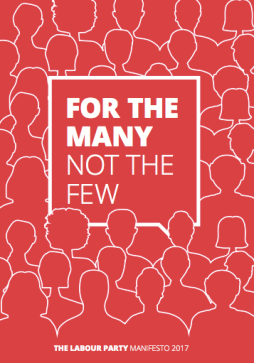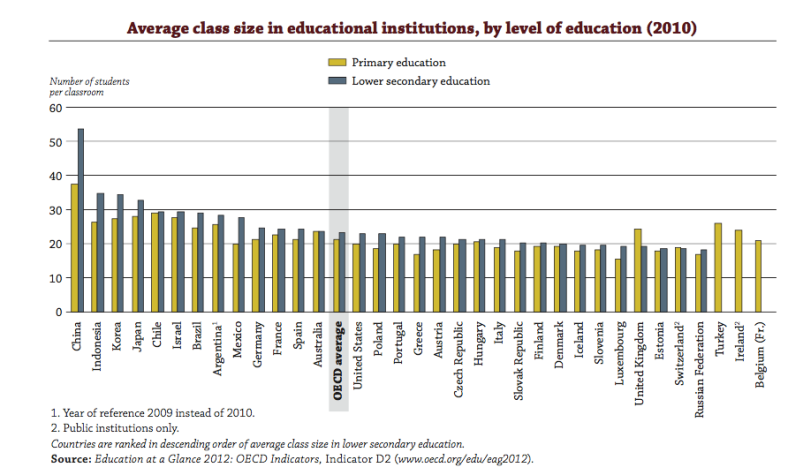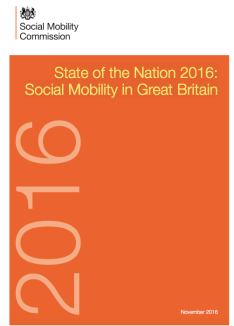The country goes to the polls on Thursday in what now appears to be an almost neck and neck political race.
In examining the main party manifestos of Labour and the Conservatives and the current/ futures secretary of state for education the main summary points for teacher education are:

Conservatives: Justine Greening has done a good job of restoring some confidence in the DfE. She may not have the backing of Theresa May but does appear to have listened to the sector and made some sense of the teacher education landscape. It would make little sense to remove her if the Conservatives are returned to power.
The DfE does however seem to have hit rock bottom in relation to teacher education and doesn’t know what to do next, therefore I would imagine many civil servants would welcome a change of government simply to introduce some new energy and fresh thinking to what are considerable problems.
In relation to teacher education there is a commitment in the Conservative manifesto to maintain the challenge of getting the best teachers into the most challenging schools. It is still not clear how this will be achieved but this policy was on the table before the announcement of the election.
Equally there is a commitment to maintaining bursaries and the introduction of loan forgiveness (we forgive you for the burden we imposed). Neither of these may have a significant impact on recruitment or retention however again details are scarce.
Two other points in the conservative manifesto are enabling teaching assistants to become teachers (presumably linked to apprenticeships) and the introduction of mental health first aid for teachers. The mental health first aid proposal inevitably seems tokenistic in response to significant cuts to Child and Adolescent Mental Health Services (CAMHS). However increasing all teachers understanding of wellbeing, including their own, would appear beneficial.
In many ways the lack of ambition and attention to teacher development in the Conservative manifesto shows a party that has run out of steam and energy with regards to education. The sector has become so fragmented and disorientated that it appears the government has almost given up and no longer knows what to do whilst at the same time the public are beginning to recognize the impact of cuts on basic services. In many ways Brexit has been a convenient distraction from education for the government however perhaps to the Conservatives surprise the importance of education seems to have caught them off guard during the election campaign.
Ultimately there is now a complete lack of clarity within the DfE regarding teacher education that should the conservatives win, it would appear to suggest a dismal few years ahead although perhaps not as dismal as the previous 7 years!
Labour: The Labour shadow education Secretary Angela Rayner has done a good job in opposition having been elevated rapidly to her position due to the internal machinations within the Labour party.

Whilst Labour might not have the answers to address the issues in teacher education they do seem to recognize some of the causes of the problem. They appreciate that a narrow curriculum and rigid assessment reduces the role of the teacher, which it would appear contributes to the ‘recruitment crisis’. Increasing teacher autonomy and pay would therefore seem to be very attractive if both can be delivered. More ambitious is the potential of sabbaticals, which would clearly be very attractive.
Whilst there is much more detail about schools in the Labour manifesto there is little detail about how teacher education would be reformed. The removal of student loans will however prove interesting for teacher education and how this this would be applied and as a consequence what impact it would have is unknown?
So whilst neither party has offered any real clarity as to how they will tackle the issues in initial teacher education, below are my 10 suggestions, set within a broader set of ambitions for education, for the next Secretary of State for Education:
- Establish an Independent Teacher Education Agency. Now whilst it might appear this suggestion is harking back to the days of TDA/ TTA, the reality is that despite its many problems the TDA delivered on many fronts. More significantly the independence that it had meant it didn’t have to be as reactive to government whims and as consequence was able to develop more sustainable policies. Currently teacher education is not a priority within the DfE and struggles for attention and as a consequence lacks any form of stability or long-term ambition. Establishing an independent body to oversee teacher education would be the quickest win and best way forward for either party.
- Make teaching attractive and collaborative. The biggest and best advert to attract new teachers is the existing profession. The DfE have thrown money at bursaries and advertising but these incentives are merely to attract new teachers in and are not designed to sustain teachers in the profession. The introduction of such significant differentials in payments of bursaries merely distorts a view of what is most valuable. Teaching is a ultimately collaborative venture and the beneficaries of this should be the “many and not the few’. It takes an entire school to educate pupils therefore pitting teachers against each other from the start of their training does not convey this message.
Teaching has to operate as a community within a wider community and many of the policies of recent years have had an adverse effect on the very principles that bind colleagues together. Sending a clear message from the start of their training that all teachers are valued equally would represent an important starting position.
- Shift the discourse. The constant narrative of placing the problems of society on schools has to change. Schools reflect the diversity and disadvantages of their community – they don’t simply create them. Schools are not responsible for unemployment, food banks, reductions in services or a lack of resources and opportunities within communities.
Whilst some schools may have failed in the past and all schools should always be the primary source of education for a child; schools exist within a community and are one, essential, part of a continuum of contributions that are needed to develop healthy and successful children.
- Change the inspection. Schools should be accountable but existing inspection approaches bring about too much fear and stress in the system and as a consequence have distorted the entire school system. Some of this may have been essential but we must now move to a system of collaboration and joint responsibility developed through negotiation and partnership, something that would be much more beneficial for schools, teachers and pupils. Certainly a trial of new ways of quality assuring in the least obtrusive and most beneficial way for schools, teachers, parents and pupils should be a priority.
- Increase the innovation. Despite the turbulence in teacher education the amount of genuine innovation in the sector remains disappointingly modest. Where there has been innovation this has often been driven by expediency, focused on getting teachers into the classroom quickly via a ‘drive-through’ approach rather than being focused on how to create highly capable and informed teachers committed to the profession.
Opportunities to test and research new ways to develop teachers for the future should be possible without being driven by vested or short term interests or by being overly constrained by fear or uncertainty.
- Overcome the patchwork. Trying to conceptualize and grasp a local area is now difficult as what were local education authorities are now patchworks of different Teaching School Alliances, Multi Academy Trusts and Academy Chains. The vested interest of these different organizations may not always (but sometimes do) reside in the immediate local community and as a consequence a lack of coherence exists with the most vulnerable and needy pupils being the one’s most affected by the patchwork of different organizations.
Likewise the most ambitious schools are able to snap up the best new teachers. Ultimately, there now needs to be regional oversight established to ensure we have an intelligent response to teacher supply and considered allocation within local regions.
- Increase the quality. Returning back to point 1, a Teacher Education Agency would need to once again be responsible for quality assurance of provision, which is currently lacking in ITE. If anything we now can be less sure of the quality of provision in ITE than anytime in the last 20 years. Whilst we have a compliance focused frameworks of inspection – the reality is that there is very little information available for decisions about how to distinguish between different forms of provision and the different qualities (or lack of) within partnerships.
Ultimately new ways of defining quality within ITE need to be explored whilst a more specific conversation about what are the essential requirements for teacher educators and who are the ‘teacher educators’ would be timely?
- Beyond the data – the 4th way. As previously indicated the use of data to ensure high quality provision may not be enough and may only let a system develop and evolve so far. One reality of spreadsheet driven accountabilities is it promotes a gaming culture and a narrowing of ambition. The Fourth Way (a book by Alan Hargreaves and Dennis Shirley) proposes six features that offer an inclusive vision, public engagement, achievement through investment, corporate educational responsibility, students as partners in change and mindful learning and teaching.
Ultimately if there is something that we have learned in the last six years it is what doesn’t work and now is an opportunity to move ahead in new ways. As such adopting some of the key principles that myself and colleagues have previously advocated as part of the Teacher Development Exchange group allows us to move initial teacher education into a new cycle of hope, ambition and sustainability.
- Profession led. I have for some time had difficulty with the term a ‘school led system’? Did a ‘school led’ system really want to narrow the curriculum, reduce the supply of teachers, reintroduce grammar schools or fragment the system? The reality is that ‘school led’ was often the means of the government for sidestepping responsibilities whilst using ‘school led’ to be provocative in challenging often existing and previously positive relationships and partnerships.
In the same way it takes a community to educate pupils, it requires a community and partnerships to recruit, develop and sustain teachers and who does this shouldn’t be determined on ideological grounds but through well informed and established principles.
- Have a proper review. Scotland and Wales have both had thorough and ambitious reviews of their teacher education systems whilst in England had a rapid period of change that was followed by a superficial review of initial teacher education. If the next government is serious about teacher education a thorough review of the system is needed which should be carried out in a transparent, intelligent and systematic way.
The ten points above are very much in response to thirty years of continual change in the education system, ever since the introduction of the education reform act in 1988. We can now only hope a new government may have some ambition to make sense of where we are and to take time and have aspirations for establishing sustainable change rather than further seeking short term political gain. The suggestion above are most certainly not about trying to recapture the past, rather they are about trying to establish a sustainable system through making some sense of what is now a highly complex and disjointed system.
How amazing would it be to have an education secretary committed to developing the highest quality teacher education system in the world – the reality is anything less than this ambition should not be acceptable!












